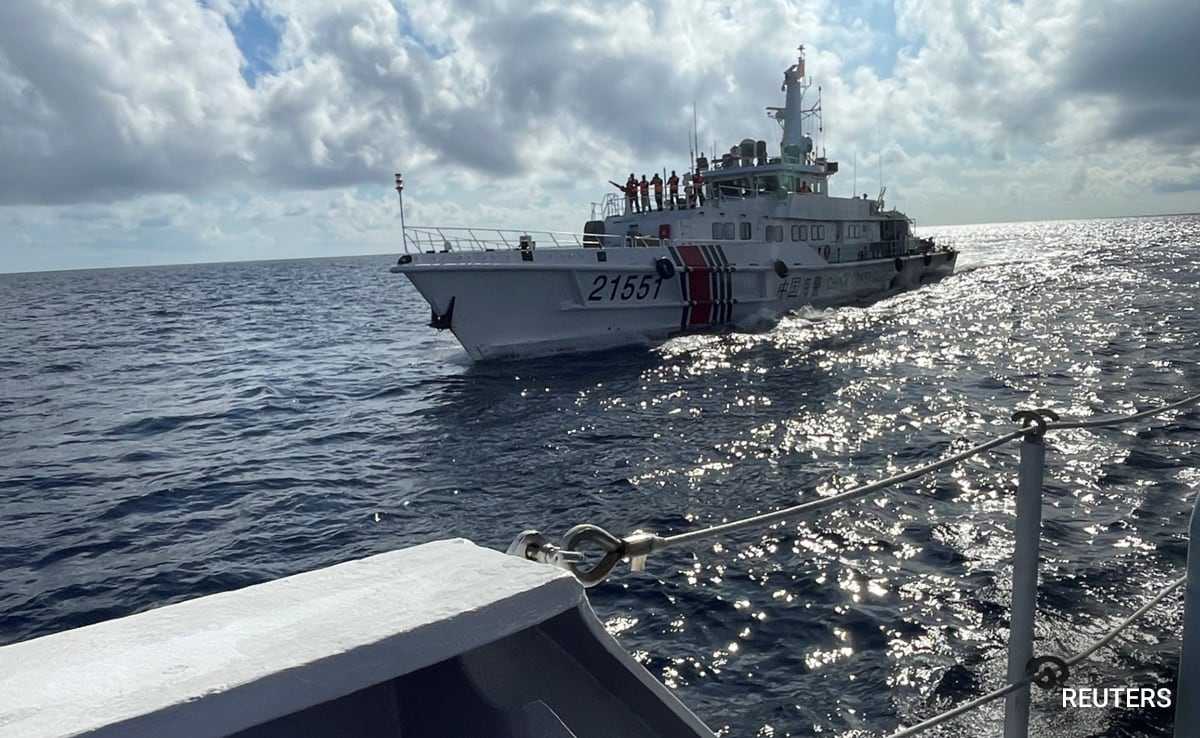World
China and Philippines Trade Blame for Collisions in South China Sea

Beijing and Manila have exchanged accusations following two separate collisions on Sunday involving Chinese vessels and Philippine boats in the disputed South China Sea. The incidents occurred near Second Thomas Shoal, located in the Spratly Islands. This region is heavily contested, with China deploying ships to assert its claims over a large portion of the sea.
The Philippines claims that China’s coast guard collided with a supply boat that was on a resupply mission for Filipino troops stationed on a remote outpost near Second Thomas Shoal. China, on the other hand, states that the collision was caused by the resupply boat ignoring warnings and deliberately passing through law enforcement in an unprofessional and dangerous manner.
In a separate incident, a Philippine coastguard vessel escorting a routine resupply mission was struck by what was described by the Philippine taskforce as a “Chinese Maritime Militia vessel.” China, however, accused the Philippine boat of deliberately causing trouble by reversing into a Chinese fishing vessel in a premeditated manner.
Video footage released by the Philippine military shows a brief touch between the bow of the Chinese coastguard ship and the stern of the smaller resupply vessel. While no injuries were reported on either Philippine vessel, the supply boat involved in the collision sustained damage.
The Philippine government has deemed the actions of the Chinese coast guard boat as provocative, irresponsible, and illegal, endangering the safety of the crew on the supply boat. China, who claims nearly the entirety of the South China Sea, continues to disregard an international ruling that its assertion has no legal basis.
Second Thomas Shoal is located around 200km from the Philippine island of Palawan and over 1,000km from China’s nearest major landmass, Hainan island. China has shifted its focus towards asserting its sovereignty over the waters, raising concerns about potential collisions and escalating tensions.
Jay Batongbacal, director of the University of the Philippines’ Institute for Maritime Affairs and Law of the Sea, stated that the Chinese coastguard deliberately collided with the Philippine resupply vessel to test Manila’s response and gauge the resolve of their longtime ally, Washington. He emphasizes that such a collision is not accidental in the open ocean.
The Philippine supply boat was en route to the Sierra Madre, a Second World War-era warship deliberately grounded by the Philippine navy in 1999 to counter China’s advances in the region. The troops stationed on the deteriorating ship depend on regular supply deliveries for their survival. The Philippines maintains outposts on nine reefs and islands in the Spratlys, including Second Thomas Shoal.
The US ambassador to the Philippines, MaryKay Carlson, condemned China’s actions, calling it a disruption of a legal Philippine resupply mission that put the lives of Filipino service members at risk. The Philippines and China have a long history of maritime disputes in the South China Sea, with tensions intensifying in August when Chinese coast guard vessels used water cannons against a Philippine resupply mission to Second Thomas Shoal.
The US state department reaffirmed its mutual defense pact with the Philippines, stating that it extends to armed attacks on Philippine armed forces, public vessels, and aircraft, including those of its Coast Guard, anywhere in the South China Sea.












